
Ever wondered how your electric vehicle updates itself over the air (OTA)? Is it software or firmware? Perhaps you’re wondering if the new EV you’re considering is even fit with over-the-air capabilities.
No matter the reason, we’ve put together a guide outlining how OTA updates work, plus some of their benefits looking toward the future. Furthermore, we’ve compiled a comprehensive list of EV automakers, and their current status of OTA implementation.
Table of contents
- How over-the-air (OTA) updates work
- Over the air capabilities by EV manufacturer
- Audi
- BMW
- BYD
- Faraday Future
- Fisker Inc.
- Ford
- General Motors (GM)
- Honda
- Hyundai Motor Group (Hyundai/Kia/Genesis/IONIQ)
- Jaguar/Land Rover
- Karma Automotive
- Li Auto
- Lucid Motors
- Mercedes-Benz
- NIO
- Nissan
- Polestar
- Porsche
- Rivian
- Stellantis FKA Fiat Chrysler (FCA)
- Tesla
- Toyota
- Volkswagen (VW)
- Volvo
- Weltmeister (WM Motor)
- XPeng
How over-the-air (OTA) updates work
In short, these are updates that are delivered and downloaded over-the-air. But it’s not quite that simple, at least what is being transmitted OTA is not. At this point, you’re probably familiar with the process, nonetheless. The updates are delivered remotely from a cloud-based server, through a cellular or WiFi connection, to your connected vehicle. It’s relatively the same process as an update to your smartphone or laptop.
For EVs, OTA updates enable a vehicle’s performance and features to be continuously updated and improved. Technological advancements in these updates give automakers new freedom to constantly “freshen up” finished products remotely. To EV owners, your car now has the potential to get better over time.
FOTA vs. SOTA
As you’ll see in the breakdown by automaker below, not all OTA updates are created equal. The first glaring difference is firmware over the air (FOTA) updates as opposed to software over the air (SOTA) updates.
Software over-the-air (SOTA) updates
SOTA updates are much more common and have been integrated to at least some extent by all of the larger EV automakers. As EVs become more prolific on roads worldwide, their lack of dependency on engines and oil generally means less physical maintenance.
On the flip side, EVs are being manufactured with millions of lines of code, vitally dependent on software to function. In this case, SOTA negates the need for a visit to the shop. SOTA updates can include changes to any software that controls the vehicle’s physical parts or electronic signal processing system. In practice, SOTA updates often tend to apply more to user interfaces like infotainment screens and navigation.
Firmware over-the-air (FOTA) updates
While SOTA updates have quickly become commonplace, updates for FOTA are not as easily accomplished. EV pioneers like Tesla and NIO have been able to crack the code so to speak, but other legacy automakers aren’t so eager to adapt.
As a newer concept, the flow of firmware updates over the air requires advanced technology not all automakers possess yet. Cybersecurity, speedy connectivity, and massive computing power all must be present in an EV to receive FOTA updates, not to mention a helluva lot of memory.
Other automakers are still working hard to integrate intelligent gateway chips for FOTA capabilities. These gateways are vital in bridging the communication gap between a device, its sensors, equipment, systems, and the cloud.
At this point, FOTA technology is an absolute must to compete in the EV market moving forward.
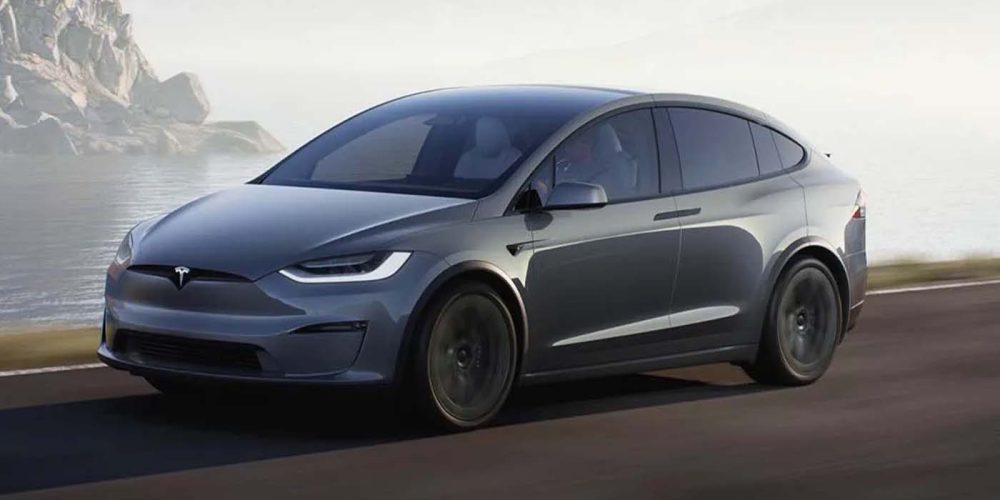
Over the air capabilities by EV manufacturer
Below is an alphabetical list of dozens of automakers developing and manufacturing consumer EVs. We’ve either researched or spoken to each company directly, to get their latest status on over-the-air software or firmware update capabilities.
The focus, for now, is on automakers that produce consumer-grade, fully-electric vehicles. We will update this list as more companies emerge, and current companies expand their OTA capacities.
Audi
Currently, Audi does offer over the air updates, but only for its vehicle maps. Those sorts of updates are sent out regularly and can be done from home an a wifi connection. Unfortunately for current e-tron owners, any other software updates must be manually done at a dealership.
Part of the issue with OTA capabilities is that Audi utilizes much of its controls with physical knobs and buttons. These toggles must all be checked to ensure they’re all synced up with a given software update. Most other EV manufacturers have transitioned to tablets and touchscreens.
BMW
BMW began using OTA updates in 2018 and has slowly increased its presence since. The automaker does offer over-the-air software updates to most of its models, but not to the full extent as some other competitors.
Currently, BMW’s OTA updates extend to infotainment systems to enhance features already onboard and to purchase and install “optional equipment features.” Furthermore, updates to the Advanced Driver Assistance Systems (ADAS) can be updated OTA in a limited capacity.
BYD
BYD is an established Chinese manufacturer of battery technologies and various electric machines. The automaker itself has previously admitted that while it’s one of the industry leaders in Chinese hardware, it has room for growth in regard to software. Especially compared to the likes of Tesla.
In 2018, BYD unveiled its DiLink system, offering an intelligent eco-system inside and out of each BYD EV. By utilizing DiLink, BYD became the first Chinese automaker to offer OTA upgrades.
In February of 2021, BYD announced a partnership with Aurora Mobile Limited to collaborate toward digital upgrades of BYDs EVs. As of June 2021, BYD enabled about fifteen OTA updates across multiple models to improve things like intelligent connectivity, driving assistance system and power.
Faraday Future
Faraday Future is currently building production intent versions of its first consumer EV, the FF 91. at its manufacturing facility in Hanford, California. While it continues to work toward actual deliveries, the automaker has already acknowledged that it has already been updating the FF 91’s software over the air.
Furthermore, such updates are actually initiated from the FF 91’s infotainment system, including features like AI voice assistant and location sharing. In fact, the future EV’s OTA updates will include the functional domains in the FF 91, including powertrain, thermal, battery, seats, lighting, and more.
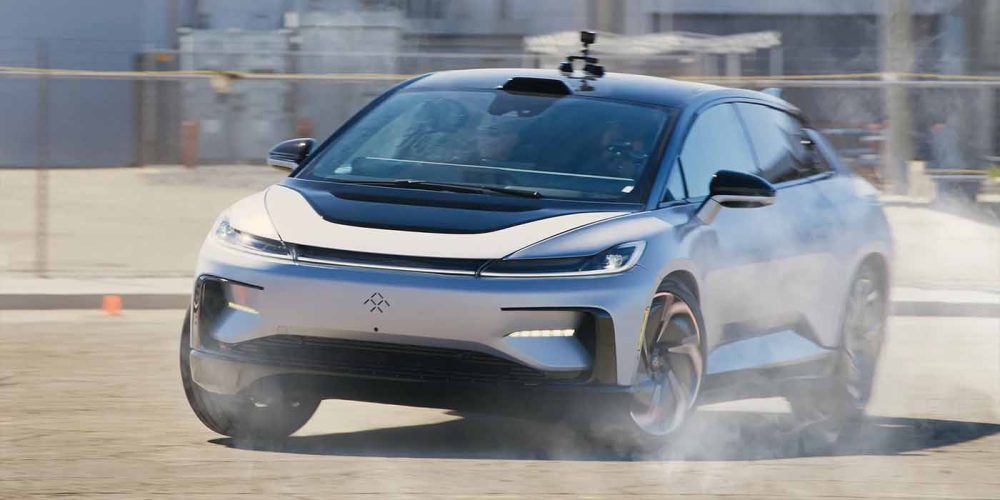
Fisker Inc.
With a long term agreement with Magna in place, Fisker is close than ever toward delivering its first EV, the Ocean this fall. We do not have the exact capacity of what OTA capabilities will be present in the flagship EV from Fisker Inc. but Henrik Fisker shared the following in a previous press release surrounding its Fisker Intelligent Pilot system:
With state-of-the-art hardware and software packages, Fisker will deliver a new type of mobility experience that will stay relevant to the customer through the lifecycle of the vehicle. We will announce further product details closer to our launch in Q4 next year. Customers can expect FI-Pilot to deliver innovative and industry-unique features that are being created to enhance the mobility experience expected from a modern, premium electric vehicle.
Per the release, over-the-air updates (OTA) will be powered by the Fisker AI cloud and will be able to deliver incremental new advanced product features through the lifecycle of the vehicle.
With two more models already in the pipeline after the Ocean, we can expect to see future OTA capabilities across Fisker’s upcoming lineup of unique EVs.
Ford
Ford is another legacy automaker making efforts to fully-integrate over-the-air software updates into its fleet.
In 2020, Ford began equipping its designed vehicles with OTA capabilities. This includes its popular Mustang Mach-E and the new 2022 F-150 Lightning, which recently began customer deliveries.
According to Ford’s website, its new platform keeps current EV software running until the new version is ready for activation. Additionally, Ford claims this is something that no other vehicle can do today.
General Motors (GM)
General Motors first introduced OTA tech in 2009 by performing over-the-air updates through OnStar and in-vehicle infotainment. In late 2019, GM introduced what it calls its Vehicle Intelligence Platform (VIP). VIP now enables GM to send OTA updates to nearly every vehicle control module, not just infotainment.
Last year, GM announced a new software platform called Ultifi, that will build on top of VIP to provide more frequent and seamless OTA updates. The new platform works by separating key software from VIP’s hardware to simplify the OTA process, enabling GM to provide more robust updates and cloud-services to customers.
Ultifi first debuted on GM’s 2020 models of the Cadillac CT5, CT4 and Chevrolet Corvette Stingray, but no EVs. That being said, GM has stated that by 2023, Ultifi will power the majority its models globally.
Honda
Honda currently offers limited OTA capabilities for a select number of its vehicles. Furthermore, all software updates pertain solely to infotainment systems like navigation and CarPlay function. All through a system called HondaLink.
As far as we can tell, the Japanese manufacturer has not offered any updates to its future plans of expanding OTA updates past infotainment software. Its progress toward BEV manufacturing has been laggard at best.
Hyundai Motor Group (Hyundai/Kia/Genesis/IONIQ)
Similar to Honda, Hyundai Motor Group is a bit behind in terms of full OTA integration. Currently, the umbrella company offers limited over-the-air software updates to a small number of vehicles. This includes the Hyundai Sonata and Ioniq, the Kia K9, and the Genesis G90.
Last fall, Hyundai Motor Group announced an extended partnership with Nvidia to implement its Drive infotainment systems in all models starting in 2022. The Nvidia Drive system will support OTA updates, but again, that only applies to infotainment software.
In May of 2022, Hyundai rolled out its first OTA update for the new IONIQ 5, but it only applied updates to infotainment and map software.
Jaguar/Land Rover
As both automakers are siblings under the same umbrella (Tata Motors), their software update pages are identical. Both companies offer over the air software updates to infotainment systems and “optimized charging capability in all‑electric vehicles.”
The over the air update capabilities currently maintain and fix the software vehicle Infotainment and Telematics Module, and, in EVs the Battery Energy Control Module. You can peep those details here.
Karma Automotive
Currently, Karma’s lone consumer offering, the GS-6 PHEV comes with OTA capabilities standard. This includes over-the-air updates to ADAS, adaptive cruise control, electric motor software, and battery control management systems to name a few.
This is in addition to more common OTA updates like infotainment, instrument clusters, and touchscreen controls. Karma Automotive (apparently) has an all-electric GSe-6 on the way as well, which is sure to feature the same capabilities, if not more.
Li Auto
Chinese automaker Li Auto does currently offer over-the-air software upgrades. However, like many of the automakers on this list, it has yet to crack the code for firmware updates. Li Auto currently offers OTA software updates to driver interface components within its EVs.
In fall of 2020, Li pushed V1.4 to drivers offering over twenty different upgrades and optimizations. This update included features like Bluetooth connectivity for iPads, assisted driving mileage stats, and new touchscreen interfaces.
In May of 2022, Li Auto rolled out an OTA update to its Li ONE SUV that enhanced its ADAS features, which is definitely more than simple navigation software updates.
Lucid Motors
Lucid Motors is one of the newer automakers on the EV block. The first trim of its flagship Air sedan called the Dream Edition began rolling off assembly lines before deliveries in October of 2021 and has since been joined by a second model called the Air Grand Touring.
From what we’ve gathered so far, the ability to provide OTA software updates on a regular basis will remain a foundational part of Lucid Air’s design. Lucid Motors has previously mentioned OTA capabilities regarding its DreamDrive ADAS system, as well as user interface and experience systems.
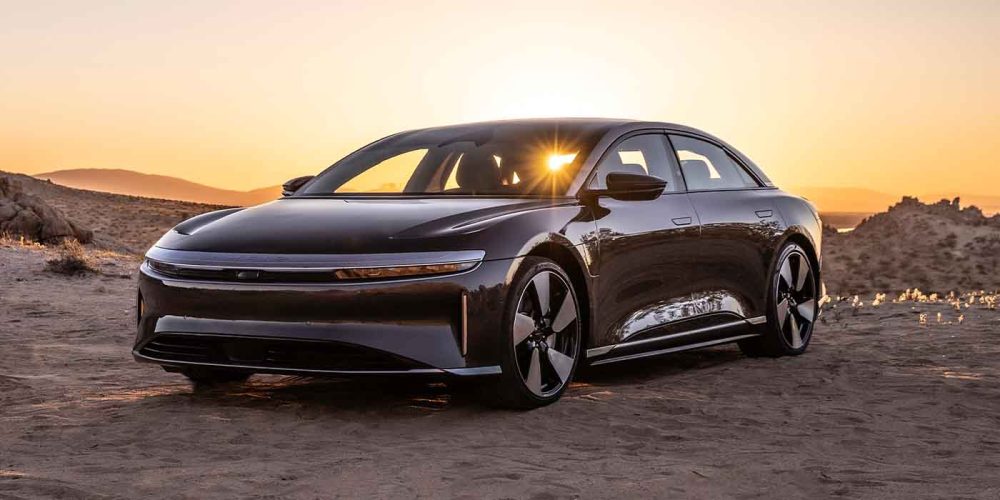
Mercedes-Benz
Mercedes-Benz currently offers OTA updates every three months or so. However, those updates pertain entirely to navigation and infotainment features. According to Daimler, the luxury automaker has delivered over 12 million OTA updates to infotainment since 2013.
Through a partnership with Nvidia however, MB is developing an entirely new software architecture. This new architecture is expected to roll out in Mercedes-Benz’s 2024 models and expand globally from there.
NIO
As one of the leading EV automakers in China, NIO offers a variety of over-the-air capabilities to its fleet. In its OS 2.8.0 launch in late 2020, OTA capabilities for all NIO models were enhanced.
Similar to Tesla, this includes both firmware-level upgrades for the entire vehicle system (FOTA) and upgrades for infotainment-related functions (SOTA). This trend has and will continue as NIO rolls out new EVs like the ET7 and the upcoming ES7 to customers in China and the EU.
Nissan
Currently, Nissan only offers over-the-air software updates for its customers. This service is called NissanConnect. Like many other automakers, it uses wifi or cellular connectivity to update a Nissan vehicle’s infotainment software. Nissan has not shared any plans to offer FOTA updates at this point.
Polestar
The Swedish automaker began rolling out its first OTA updates on its Polestar 2 EV in late 2020.Together with its co-owner Volvo Cars, updates have continued to roll out in EVs, including over-the-air software updates to vehicle cameras, climate control, and radio.
Furthermore, the previous updates have featured “range improvements,” and incremental speed improvements when DC charging. In Ovtiber of 2021, Volvo and Polestar rolled out Range Assistant in an OTA update, which offers drivers advice and assistance in achieving max battery efficiency.
Beginning with the upcoming Polestar 3 SUV, new Polestar EVs will feature a new infotainment system from Qualcomm Technologies Inc., who will supply its third generation Snapdragon Cockpit Platforms and its advanced suite of wireless technologies. Future updates will be rolled out over the air as well.
Porsche
When Porsche first introduced its Taycan performance EV, it promised regular over the air capabilities. Several variations of the Taycan have since delivered, and that is not quite the case so far.
Currently, the Taycan does have the ability to accept OTA updates. With that said, the technology is only used for smaller patches. At least for now.
On the flip side, Taycan owners still need to take their EV into a service center for any major updates. This gives Porsche the opportunity to install an update using its own high-speed line. Similar to Audi, Porsche techs can then test and verify the function of all control units after the update.
Rivian
Since last fall, Rivian has begun rolling customer ready versions of its R1T pickup with much fanfare, followed by a small number R1S SUVs so far in 2022.
Rivian’s OTA capabilities are a key feature in keeping its fleet consistently updated. This includes updates to Rivian’s driver assistance system it calls Driver+.
Rivian plans to continuously add functionality to the assistance and safety features compiling Driver+ through OTA updates. According to the over the air updates section of Rivian’s service page:
Over-the-air updates enable us to continuously improve the experience for every owner. New features and performance updates include entertainment, digital experience, vehicle dynamics, range and efficiency, battery management algorithms, thermal management and more.
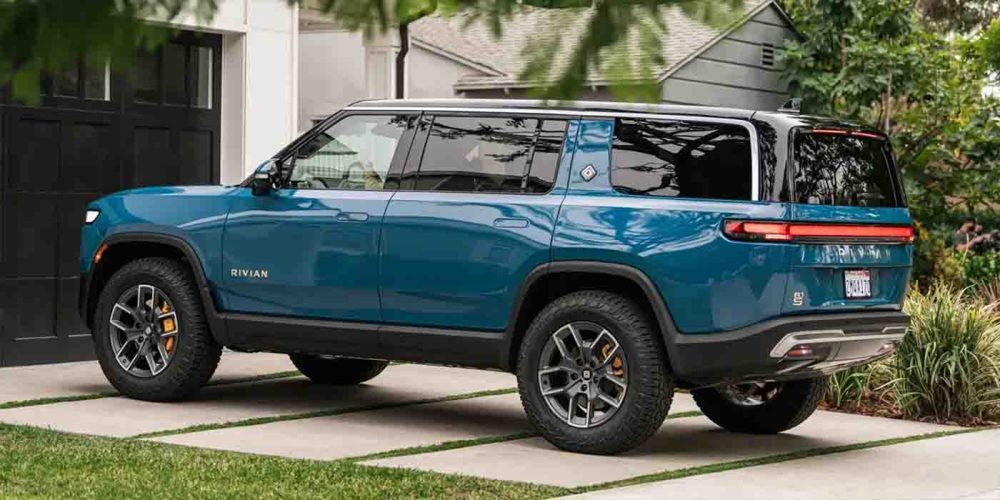
Stellantis FKA Fiat Chrysler (FCA)
Stellantis, formerly known as Fiat Chrysler, is the first on our list to fit a recurring theme you’ll notice as you read on. Today, the umbrella automotive conglomerate is responsible for Chrysler, Dodge, Jeep, Ram, Fiat, and Maserati. Although Stellantis is working on electrified versions of several models in this arsenal, extensive over-the-air software updates are still in the works.
Currently, Stellantis only offers OTA firmware updates for its infotainment systems. The updates keep interfaces like navigation fresh, while offering capabilities to add new features like Alexa and CarPlay.
However, in late 2021, Stellantis shared plans to offer connected services in its vehicles with the goal of putting 26 million “monetized connected cars” on roads by 2026 to become a “mobility tech company.” This strategy includes over-the-air updates, as well as connected features like autonomous driving features provided by systems known as STLA Brain and AutoDrive.
Tesla
Tesla remains the “OG” in OTA. The American automaker first utilized over-the-air software capabilities back in 2012 with the launch of its Model S sedan. Perhaps you’ve heard of it? With the debut of its Model 3, Tesla set the new standard for FOTA capabilities as well.
Currently, Tesla’s OTA updates extend to its entire fleet and are released consistently. Mostly for minor bug fixes, but a few times a year, Tesla owners can look forward to extensive OTA updates.
These updates cover everything from extended range, Sentry Mode, and even Tesla’s FSD beta.
Toyota
Like several of the other legacy automakers headquartered in Asia (particularly Japan), Toyota has previously offered lightweight OTA capabilities amongst a very select list of vehicles. Unlike the others, however, it looks to flip the script and veer toward advanced software capabilities.
In 2021, Toyota announced a new operating system called “Arene,” allowing new features to be installed in a car’s existing hardware over the air. Furthermore, Arene will provide a platform for developers to create new software.
Many legacy automakers are still 3-4 years away from OTA capabilities to match Tesla, including Toyota. That said, the automaker believes Arene can eventually become a licensable platform that can compete with Tesla. That is, if Toyota doesn’t ruin the whole EV party for everyone first.
Volkswagen (VW)
Volkswagen is one of the more recent legacy automakers to join the OTA software club. In March od 2021, VW announced it would begin offering over-the-air software updates for its line of ID EVs, including the ID.3 and ID.4.
Volkswagen got off to a bumpy start with OTA implementation. In late 2020, Electrek reported software issues VW was having with its ID.3. Those early issues have since been sorted out and all Volkswagen EVs currently being produced are equipped with the software that enables over-the-air software updates.
In July of 2021, Volkswagen announced that an OTA software update was in fact coming to its ID lineup. Currently, Volkswagen’s ID vehicles see regular OTA software updates every 12 weeks or so.
Volvo
As the co-owner of the aforementioned Polestar, Volvo launched the same over-the-air software update capabilities earlier this year. Like the Polestar 2 EV, Volvo’s XC40 Recharge saw increased range and faster DC charging times. Both EVs are based on the same CMA platform and feature (mostly) the same technology.
Additionally, Volvo has launched its C40 recharge SUV, which also holsters OTA capabilities. You can check the latest software updates from Volvo here.
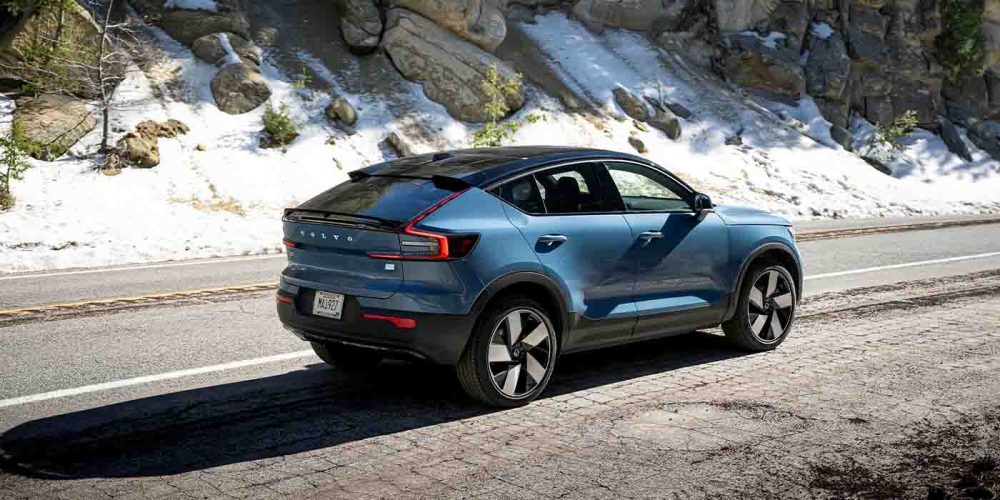
Weltmeister (WM Motor)
This Chinese automaker is very focused on OTA updates. In fact, all of WM Motor’s EVs are connected over the air.
Not only does this make each car a valuable data resource for usage and performance on the roads, but allows for software and hardware upgrades. As a result, WM Motor currently offers constant improvements to drivers through OTA upgrades.
XPeng
Like several of the other Chinese automakers on this list, XPeng provides robust OTA capabilities to its customers.
In January of 2021, the company launched its most comprehensive update in its six-year history. Its updates have included features like parking assist and its new Navigation Guided Pilot (NGP) autonomous driving assistance system.
As it continues to expand in China and most recently into specific markets in Europe, XPeng will continue to roll updates over the air to its electric vehicles.
Subscribe to Electrek on YouTube for exclusive videos and subscribe to the podcast.
Author: Scooter Doll
Source: Electrek



